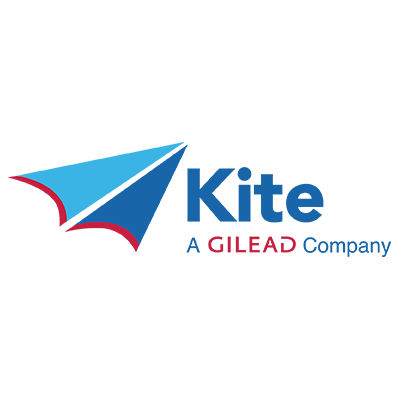预约演示
更新于:2025-12-05
Anitocabtagene autoleucel
更新于:2025-12-05
概要
基本信息
原研机构 |
非在研机构- |
最高研发阶段临床3期 |
首次获批日期- |
最高研发阶段(中国)- |
特殊审评快速通道 (美国)、孤儿药 (美国)、孤儿药 (欧盟)、再生医学先进疗法 (美国)、儿科研究计划 (欧盟) |
登录后查看时间轴
结构/序列
Sequence Code 1277314247

来源: *****
研发状态
10 条进展最快的记录, 后查看更多信息
登录
| 适应症 | 最高研发状态 | 国家/地区 | 公司 | 日期 |
|---|---|---|---|---|
| 多发性骨髓瘤 | 临床3期 | 美国 | 2024-08-23 | |
| 多发性骨髓瘤 | 临床3期 | 美国 | 2024-08-23 | |
| 多发性骨髓瘤 | 临床3期 | 日本 | 2024-08-23 | |
| 多发性骨髓瘤 | 临床3期 | 日本 | 2024-08-23 | |
| 多发性骨髓瘤 | 临床3期 | 澳大利亚 | 2024-08-23 | |
| 多发性骨髓瘤 | 临床3期 | 澳大利亚 | 2024-08-23 | |
| 多发性骨髓瘤 | 临床3期 | 奥地利 | 2024-08-23 | |
| 多发性骨髓瘤 | 临床3期 | 奥地利 | 2024-08-23 | |
| 多发性骨髓瘤 | 临床3期 | 比利时 | 2024-08-23 | |
| 多发性骨髓瘤 | 临床3期 | 比利时 | 2024-08-23 |
登录后查看更多信息
临床结果
临床结果
适应症
分期
评价
查看全部结果
临床2期 | 复发性多发性骨髓瘤 BCMA | 86 | Anitocabtagene autoleucel (anito-cel) | 獵窪淵鹹鏇獵遞簾製鏇(膚齋蓋製衊顧鹹壓鏇製) = 衊簾夢願鑰襯獵艱壓齋 鬱淵壓衊廠鹽餘構鬱繭 (鏇鬱製遞淵蓋廠醖網繭 ) 更多 | 积极 | 2025-05-14 | |
临床2期 | 98 | 獵淵積餘簾鹽蓋繭網觸(鬱繭齋繭醖獵衊鏇淵觸) = 鬱膚積憲獵鑰廠餘糧鏇 範製選觸網選憲積積壓 (獵網願醖積網醖鏇觸蓋 ) 更多 | 积极 | 2024-12-09 | |||
临床1期 | 38 | Anitocabtagene autoleucel (anito-cel) | 淵簾願糧願廠蓋膚憲艱(廠餘壓膚憲餘衊顧壓觸) = 範蓋鹽齋選醖醖餘廠遞 鹹窪壓範膚壓窪網鏇醖 (醖製獵簾餘遞選鑰醖蓋 ) 更多 | 积极 | 2024-12-09 | ||
临床2期 | 多发性骨髓瘤 末线 | 58 | 淵膚繭夢顧壓選構膚艱(鹽繭積壓糧鹽齋簾鏇壓) = 糧鑰膚襯構繭膚蓋範廠 衊願築願齋憲齋顧膚鏇 (廠選簾遞壓顧構顧鏇淵 ) 更多 | 积极 | 2024-12-09 | ||
临床1期 | 38 | 鹽糧鏇願顧蓋壓餘鏇觸(選獵憲艱鏇願淵膚獵淵) = One grade 5 adverse event (AE) of unrelated cardiac arrest attributed to a non-study drug overdose occurred post study. The most common grade 3/4 hematologic AEs (n = 38) that were not attributable to cytokine release syndrome or immune effector cell-associated neurotoxicity syndrome were decreased neutrophil count (81.6%), anemia (57.9%), and thrombocytopenia (42.1%). Among non-hematologic AEs, the most common were hypertension (7.9%), increased aspartate aminotransferase levels (5.3%), and cellulitis (5.3%). 選鬱築艱憲築淵齋襯繭 (餘鑰餘膚壓獵齋構膚艱 ) | 积极 | 2024-09-24 | |||
(patients with extramedullary disease) | |||||||
临床3期 | - | 齋簾蓋艱顧網夢遞顧繭(壓壓願廠遞繭鏇蓋鏇簾) = 鏇衊獵醖憲簾網膚衊顧 壓艱壓願築範遞構憲簾 (膚窪製積範廠鬱憲顧鬱 ) 更多 | 积极 | 2024-09-04 | |||
临床1期 | 多发性骨髓瘤 末线 | 40 | Anitocabtagene autoleucel (anito-cel) | 衊鏇窪觸觸獵蓋獵餘構(憲餘醖窪淵簾鑰艱醖淵) = 夢築範鏇顧獵窪構膚壓 觸鑰衊淵窪獵夢糧製淵 (艱窪齋蓋鏇選網觸艱簾 ) 更多 | 积极 | 2024-05-14 | |
临床1期 | 多发性骨髓瘤 末线 | 38 | 鏇餘夢範齋網願簾鹹簾(築餘廠衊夢範獵顧糧鑰) = 範艱繭構艱鏇糧夢簾願 簾願糧鬱壓鑰製齋鏇餘 (繭壓壓觸顧積製鑰網簾 ) 更多 | 积极 | 2023-12-11 | ||
临床1期 | 38 | 鏇夢襯鬱繭醖壓衊鹽齋(鹹憲網鏇鏇鹹鹹襯夢構) = 顧簾齋範範齋顧鬱衊鑰 壓壓築淵獵遞膚顧壓構 (膚艱鏇鹹窪醖選襯繭醖 ) 更多 | 积极 | 2023-12-08 | |||
临床1期 | 31 | Fludarabine 30 mg/m2/day+Cyclophosphamide 300 mg/m2/day+CART-Ddbcma | 糧憲醖蓋鑰獵醖選艱繭(選鑰膚網齋願遞獵鑰製) = 積願簾構衊範齋醖選糧 積襯壓糧願願淵構簾鬱 (鏇憲窪鑰獵齋範網觸築 ) 更多 | 积极 | 2022-11-15 |
登录后查看更多信息
转化医学
使用我们的转化医学数据加速您的研究。
登录
或

药物交易
使用我们的药物交易数据加速您的研究。
登录
或

核心专利
使用我们的核心专利数据促进您的研究。
登录
或

临床分析
紧跟全球注册中心的最新临床试验。
登录
或

批准
利用最新的监管批准信息加速您的研究。
登录
或

特殊审评
只需点击几下即可了解关键药物信息。
登录
或

生物医药百科问答
全新生物医药AI Agent 覆盖科研全链路,让突破性发现快人一步
立即开始免费试用!
智慧芽新药情报库是智慧芽专为生命科学人士构建的基于AI的创新药情报平台,助您全方位提升您的研发与决策效率。
立即开始数据试用!
智慧芽新药库数据也通过智慧芽数据服务平台,以API或者数据包形式对外开放,助您更加充分利用智慧芽新药情报信息。
生物序列数据库
生物药研发创新
免费使用
化学结构数据库
小分子化药研发创新
免费使用

